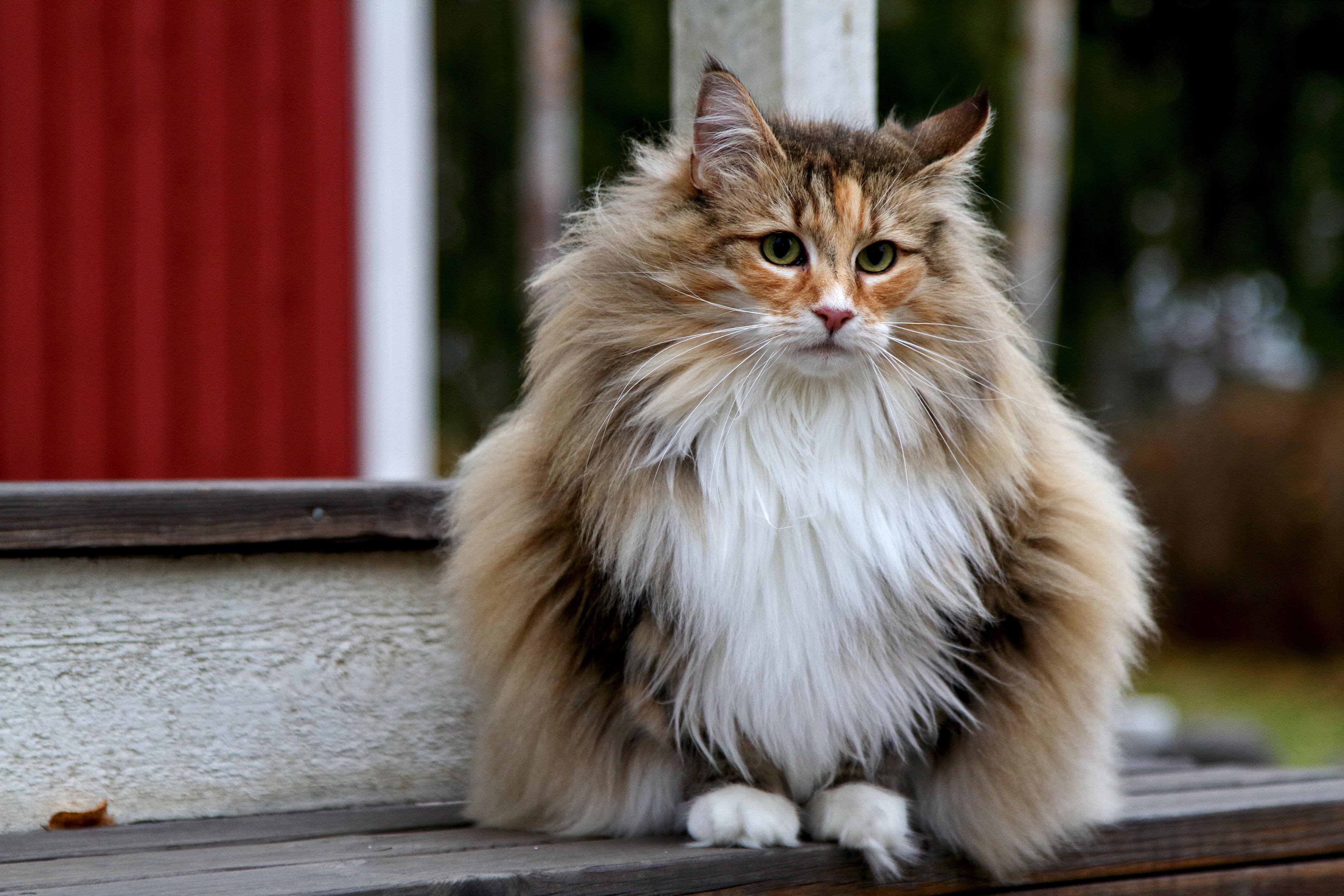Despite their seemingly warm, furry coats, cats aren't immune to the cold and its effects. While you might wonder if their fur is just for show, it actually plays a crucial role in regulating their body temperature.
A cat’s fur acts as an insulator that traps body heat to keep them warm in cold weather. It works the other way as well. During warmer temperatures, their coat helps regulate temperature by blocking direct sunlight to the skin, and hence, aiding in cooling.
How does a Cat’s Body Temperature Work?
Cats need warmth to function properly. A cat’s normal body temperature ranges between 100.5°F and 102.5°F (38°C - 39.2°C) - warmer than humans(2). Given that cats naturally have a higher average body temperature, it begs the question: why do they still seek warmth?
For three main reasons -
Conserve energy – The warmer the weather, the less energy they have to spend maintaining their body temperature.
Stay comfortable – The reason you see cats making empty cardboard boxes and shoes their home is that they prefer anything that makes them feel cozy and warm.
Avoid hypothermia – A temperature drop below 99oF (37.2oC) can be dangerous.
To gauge when a cat is feeling cold, it's helpful to know the temperatures they can comfortably handle.
When is it Too Cold for Cats?
While the temperature tolerance can vary from breed to breed, and the geography where the cat was raised, here are the average tolerance levels for most cats(1):
19 °C – 10°C (66.2°F – 50°F) – This range is usually considered safe for most cats. However, if the cat is older, especially with a short coat, they may need extra warmth.
9°C – 7°C (48.2°F – 44.6°F) – This is when you should start feeling a little concerned about a cat’s body temperature. They may start feeling uncomfortable. If you have a hairless cat, provide them with warmth even indoors.
6°C-0°C (42.8°F – 32°F) – This range of temperatures poses a medium to high risk for cats. Make sure your cat has shelter away from the cold, irrespective of the breed.
Anything below 32°F poses a very high risk for cats. They can develop frostbite and hypothermia. It is very important to always provide a warm shelter in these kinds of temperatures.
What happens if a Cat gets Cold?
If a cat is in the cold for too long, risks include(1) –
Hypothermia – It is a medical emergency when the cat’s body temperature drops to dangerously low levels (often below 100°F).
Frostbite – This happens when the cat’s extremities, like the ears, tail, or paws, are exposed to cold temperatures for a long time.
Respiratory issues – Cold temperatures can cause respiratory problems like asthma and bronchitis in cats.
Arthritis – Cold weather can cause stiffness and pain in a cat’s joints and worsen symptoms of arthritis in cats with the condition.
Decreased immunity – Being in the cold can make cats more susceptible to other illnesses.
The important thing for you as a caring cat-parent is to know when the cat is feeling cold.
How do you know if a cat is feeling cold?
Here are a few signs that can indicate if your cat is getting cold(2):
Shivering
Lethargy
Constantly seeking warmer places to sleep
Excessive whining or meowing
Lack of appetite
Cold ears and paws
Pale skin
Difficulty breathing
If you see any of the above signs, you should take your cat inside immediately and help them warm up.
How to Protect a Cat from Cold Weather?
You saw the risks that a cat faces during cold weather. The best way to avoid these risks is to protect your cat from the cold. Here are a few tips that can help you do this -
Keep them indoors
Provide warm bedding
Build shelters – If you have an outdoor cat, build a raised, insulated shelter to help keep them warm.
Increase food intake – Cats burn more calories when trying to stay warm, increasing their food intake helps compensate for the extra calories they're burning.
Monitor outdoor time – If you take your cat for a walk in the cold, keep the walk short.
Here's one last tip for anyone who lives in an area with strays: before starting your car, check underneath - cats often seek refuge and warmth near the engine.
While taking precautions can minimize the likelihood of your cat getting cold, there might still be instances where they feel chilly and even catch a cold. If your cat does show signs of illness, take them to the vet for a checkup.
If your cat does fall sick, treatment costs can quickly add up. Pet insurance can help families with the high vet bills by reimbursing up to 90% of covered vet bills. To learn more about what pet insurance covers, visit our cat insurance page.
More about Spot Pet Insurance
With a Spot accident and illness plan, you can take your cat for treatment at any licensed vet in Canada or the U.S. Spot plans don’t have networks, so whether you’re home or travelling within the U.S, veterinary services your cat receives for the diagnosis, treatment, or management of eligible services can be covered. Spot’s accident and illness plans can help cover a variety of conditions, ranging from broken bones and bite wounds to behavioral conditions and cancer. While base plans do not offer coverage for preventive care services, Spot’s Wellness Riders can be added to any base plan for an additional fee and can help cover the eligible costs of wellness exams, vaccinations, dental cleanings, and more!
Learn more about cat insurance or get a free quote!

The resident animal enthusiast at Spot. I have a lifetime of pet parent experience. If it has fur, feathers, or scales, I’ve probably shared my home with it. I aim to be a reliable source, blending experience with a dedication to the well-being of pets.
Vets Now. (2025, January 30). How cold is too cold for cats? Warning signs & safety tips. https://www.vets-now.com/pet-care-advice/too-cold-for-cats/
Vet, S., & Vet, S. (2022, October 4). Fever – is it serious? - Bishops Stortford Vets. Bishops Stortford Vets - Home from Bishops Stortford Vet Hospital. https://www.stortvet.com/fever-is-it-serious-2/












